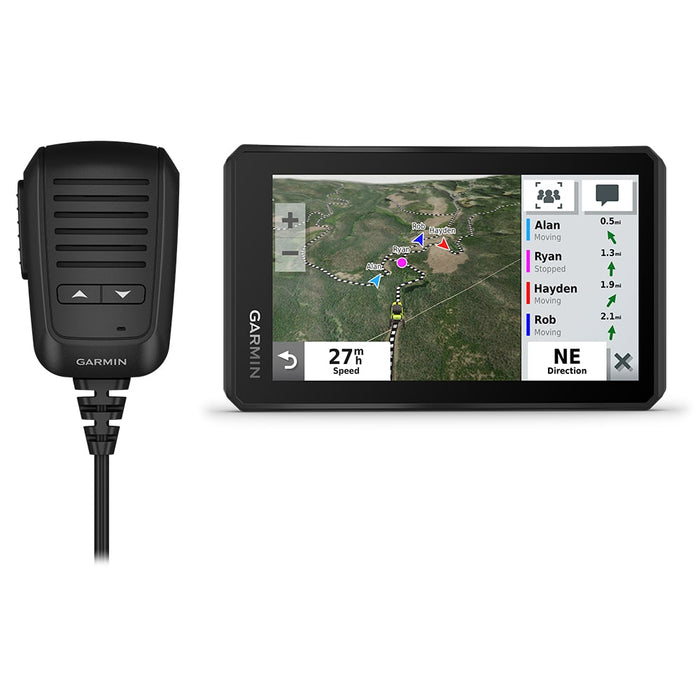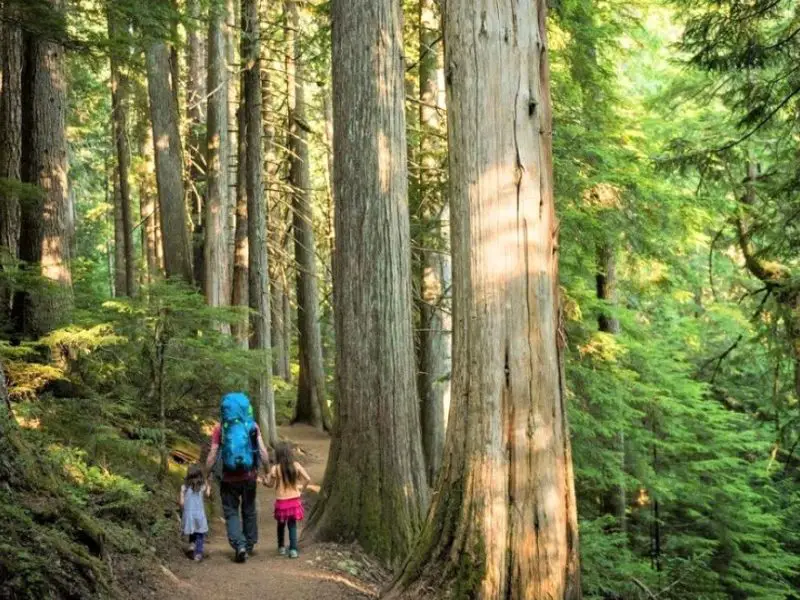To use a compass and map for wilderness navigation, first ensure your compass is properly oriented with the map. Then, use the compass to determine your heading and the map to identify landmarks and your current location.
When venturing into the wilderness, having the ability to navigate using a compass and map is crucial for safety and success. These traditional tools provide reliable guidance and help you maintain your bearings. By combining the compass with the map, you can accurately determine your current location, plan routes, and identify landmarks to assist in navigation.
We will explore the step-by-step process of using a compass and map together for wilderness navigation, providing you with the skills and knowledge needed to confidently explore and navigate unfamiliar terrain. So, let’s dive in and learn how to effectively use a compass and map for wilderness navigation.
Why Mastering Wilderness Navigation Is Essential For Outdoor Enthusiasts
Wilderness navigation is vital for outdoor enthusiasts who want to prevent getting lost and ensure their safety in remote areas. By mastering the use of a compass and map, you can gain confidence and independence in your outdoor adventures. These essential tools allow you to navigate through unfamiliar terrain, guiding you towards your desired destinations.
Understanding how to read a map and interpret compass bearings is crucial for accurate navigation. By utilizing key features on a map, such as contour lines and landmarks, you can identify your current location and plan your route accordingly. With a compass, you can determine your direction of travel and orient yourself towards your target.
By practicing and honing your wilderness navigation skills, you’ll be better equipped to explore remote areas with peace of mind, knowing that you have the tools to find your way back.
The Fundamentals Of Compass And Map
The compass and map are essential tools for wilderness navigation, allowing you to navigate through unfamiliar terrain with confidence. By understanding the different parts of a compass, you can effectively use it in conjunction with a topographic map. These maps provide crucial information about the location, elevation, and features of the land.
When choosing a compass and map, consider your specific needs and the level of detail required for your trip. By having the right tools and knowledge, you can navigate safely and accurately, whether you’re hiking, camping, or exploring the wilderness.
Understanding Cardinal Directions And Bearings
Understanding the cardinal directions is crucial when using a compass and map for wilderness navigation. Knowing which way is north, south, east, and west provides a foundation for accurate navigation. Azimuths and bearings are measurements used to determine direction and distance on a map.
By reading and using these measurements, you can find your way through unfamiliar terrain with confidence. It is essential to familiarize yourself with these concepts and practice using them before venturing into the wilderness. With a compass and map in hand, you can navigate through the wilderness and ensure a safe and successful journey.
Mastery of these skills will enhance your outdoor experiences, allowing you to explore new places and discover the beauty of the natural world. Don’t underestimate the power of a compass and map when it comes to navigating the wild!
Navigating With A Compass In Various Terrains
Navigating in dense forests requires specific techniques to ensure effective wilderness navigation. A compass plays a crucial role in helping adventurers find their way through these challenging terrains. By understanding how to read a map and use a compass, individuals can navigate through open fields and deserts with ease.
However, when facing mountainous regions, navigation becomes more complex. Steep inclines, rugged terrain, and limited visibility pose challenges that must be overcome. Strategies such as contour navigation and triangulation can assist in traversing these difficult landscapes. Remembering to keep the compass level and steady is vital for accurate readings.
Mastering these skills allows adventurers to confidently explore remote wilderness areas, ensuring a safe and successful journey. With the right knowledge and a trusty compass, anyone can confidently conquer any terrain Mother Nature presents.
Advanced Compass Techniques For Precise Navigation
Advanced compass techniques can be utilized to enhance navigation accuracy in wilderness settings. Incorporating triangulation methods is one such technique that ensures precise positioning. By accounting for declination adjustment, you can accurately reference true north on your map. Another technique is employing compass bearings and pacing to measure distances.
These methods allow you to navigate with confidence, ensuring you stay on track and reach your desired destinations. By mastering these advanced compass techniques, you can navigate through the wilderness proficiently and explore with greater ease. So, next time you venture into the great outdoors, don’t forget to leverage the power of a compass and map for accurate wilderness navigation.
Interpreting Topographic Maps
Understanding contour lines and elevation changes is crucial for interpreting topographic maps. These lines represent the shape of the terrain and help you understand how steep or flat the land is. By closely examining the contour lines, you can identify key landmarks and features on the map, such as ridges, valleys, and peaks.
Look for patterns and pay attention to the spacing between the lines, as it indicates the slope’s steepness. Additionally, contour intervals provide information about the elevation changes, helping you plan your route and avoid unexpected obstacles. Remember to compare the contour lines with the legend provided on the map, which will give you the precise measurements.
Efficiently interpreting these topographic maps will enhance your wilderness navigation skills and ensure a safe and rewarding outdoor experience.
Plotting And Following Routes On A Map
Using a compass and map for wilderness navigation involves plotting and following routes on a map. It also includes marking waypoints and creating a route plan. Whether you’re navigating along trails or off-trail terrain, these tools are essential for finding your way.
By carefully studying the map, you can determine your location and plan out your intended path. You can mark important landmarks on the map as waypoints, helping you stay on track. Creating a route plan allows you to strategize your journey and anticipate any obstacles or challenges that may arise.
With practice and familiarity, you’ll become proficient in using a compass and map to navigate through the wilderness. So, next time you embark on an outdoor adventure, be sure to bring these tools and put your navigation skills to the test!
Using Map Scales And Coordinate Systems
When navigating the wilderness using a compass and map, understanding map scales and coordinate systems is essential. Map scales help in calculating distances accurately, allowing you to plan your route effectively. Latitude and longitude coordinates provide precise location information, enabling you to pinpoint your position on the map.
By mastering these concepts, you can navigate through unfamiliar terrain with confidence. Additionally, familiarizing yourself with different map scales and coordinate systems can improve your overall navigation skills. Whether you’re hiking, camping, or exploring the great outdoors, knowing how to utilize a compass and map is crucial for safe and successful wilderness navigation.
Utilizing Gps Devices And Their Limitations
Using GPS as a supplementary tool for wilderness navigation offers numerous advantages. It helps to pinpoint your exact location quickly and accurately. However, it is crucial to understand the limitations of GPS technology. In remote areas, the signal may be weak or unavailable, rendering the device useless.
Additionally, GPS devices require batteries, which can drain quickly in the wilderness. That’s why it’s essential to carry a compass and map as a primary navigation tool. A compass doesn’t rely on external signals and is unaffected by battery life.
Maps provide a broader perspective of the surrounding terrain and allow you to plan your route effectively. By combining GPS devices with compasses and maps, you can navigate confidently and safely through the wilderness.
Navigating Without A Compass Or Map
Navigating without a compass or map requires utilizing natural indicators like the sun, stars, and landmarks. By observing the position of the sun during the day, you can determine your cardinal directions. At night, the stars act as your guide, with the North Star being particularly useful.
Landmarks, such as mountains, rivers, or distinctive trees, serve as essential reference points. Developing primitive navigation skills using nature’s cues enhances your ability to navigate in the wilderness. Pay attention to the landscape, the position of the sun and stars, and the unique features of your surroundings.
By relying on these natural indicators, you can successfully navigate without a compass or map, allowing for a more immersive and connected experience with the wilderness.
Emergency Navigation Techniques
When it comes to navigating through the wilderness during low visibility conditions or dealing with unexpected situations and equipment failure, it’s crucial to have emergency navigation techniques in place. Using a compass and map becomes even more important in such scenarios.
The key is to rely on your compass readings and map interpretation to find your way. Be mindful of potential obstacles or hazards that may obstruct your path. If visibility is limited, consider using additional tools like GPS or a handheld device.
Stay calm and think logically to make the best decisions. Remember to continuously update your navigation plan as circumstances change. Trust your instincts, use your knowledge, and take necessary precautions to ensure a safe wilderness navigation experience.

Credit: issuu.com
Taking Advanced Navigation Courses
Taking advanced navigation courses is a great way to enhance your wilderness navigation skills. These courses provide in-depth knowledge and practical experience in real-world scenarios. By exploring different navigation courses and certifications, you can learn various techniques to effectively use a compass and map for wilderness navigation.
These advanced courses cover topics such as map reading, compass navigation, orienteering, and GPS usage. By gaining proficiency in these skills, you will be equipped to navigate through challenging terrains and find your way confidently in the wilderness. Practical experience and hands-on training are an essential part of these courses, enabling you to apply your knowledge in real-life situations.
So, if you are an outdoor enthusiast seeking to improve your wilderness navigation skills, consider enrolling in an advanced navigation course to gain the expertise you need.
Practicing Navigation Skills In Different Environments
Practicing navigation skills in different environments allows you to test your abilities in new and unfamiliar settings. Whether you’re exploring urban areas or venturing into the wilderness, applying navigation techniques is essential. In urban settings, you can challenge yourself to find your way through a maze of streets and buildings, relying on your compass and map to guide you.
This will enhance your ability to navigate using landmarks and street signs. When it comes to the wilderness, the challenges multiply as you navigate rugged terrains and unmarked trails. Here, your compass and map become even more vital for determining your position and plotting a course.
By honing your skills in both urban and wilderness settings, you’ll become a confident and capable navigator, ready to embark on various adventures with a trusty compass and map in hand.
Evolution Of Wilderness Navigation In The Digital Age
The evolution of wilderness navigation in the digital age has brought forth a range of remarkable advancements. With the advent of navigation apps and online resources, outdoor enthusiasts now have an array of technological tools at their disposal, without compromising the importance of traditional skills.
These apps and resources provide valuable assistance in navigating through vast wilderness areas, offering detailed maps, real-time location tracking, and even features like augmented reality. By incorporating technology into their navigation practices, adventurers can enhance their safety and efficiency. Moreover, these digital resources serve as a supplement to the indispensable compass and map, ensuring that individuals are well-prepared and well-equipped for their wilderness explorations.
Together, the combination of traditional navigation methods and modern technology empowers outdoor enthusiasts to confidently navigate through uncharted territories. It’s a harmonious blend of the old and the new, providing a comprehensive approach to wilderness navigation.
Frequently Asked Questions For How Do I Use A Compass And Map For Wilderness Navigation?
How Do You Use A Compass And Map In The Woods?
To use a compass and map in the woods, first align the compass with the map and find your location. Then, identify your destination and determine the direction to head.
How Do You Use A Compass In The Wilderness?
To use a compass in the wilderness, hold it flat, find north using the needle, and orient your map.
How Do You Navigate Off Trail With A Map And Compass?
To navigate off trail with a map and compass, follow these steps: Study the map and identify landmarks. Use the compass to determine direction. Compare your surroundings to the map. Adjust your route as needed. Happy exploring!
How Do You Orienteer With A Map And Compass?
To orienteer with a map and compass: Use your compass to find north, line it up with your map, and follow the map’s directions.
Conclusion
Using a compass and map for wilderness navigation is a crucial skill for any outdoor enthusiast. With their help, you can confidently explore new terrains, stay on track, and make informed decisions about your route. By understanding the basics of compass and map reading, you can navigate through unfamiliar areas with ease and confidence.
Start by familiarizing yourself with the different parts of a compass and how to orientate it correctly. Then, learn how to read a topographic map, identify key features, and plot a course using a combination of compass bearings and map coordinates.
Remember to continually check your progress along the way and make necessary adjustments to stay on track. By practicing and honing these skills, you’ll become a skilled wilderness navigator and open up a world of new outdoor adventures. So grab your compass and map, and embark on your next wilderness journey with confidence!



